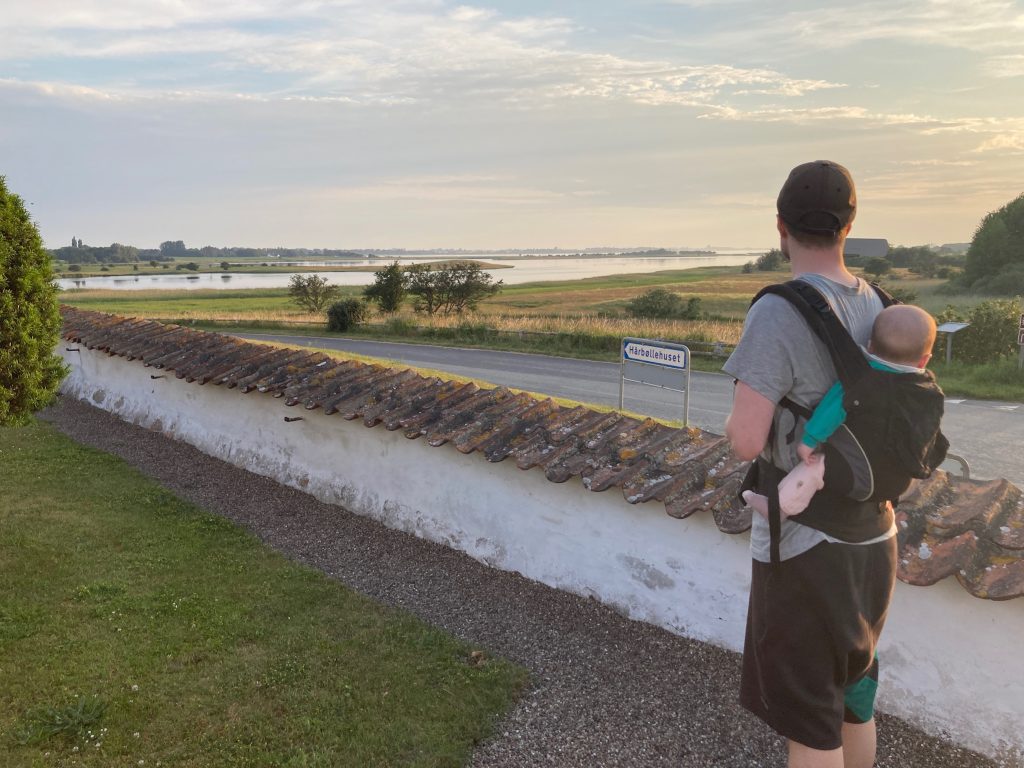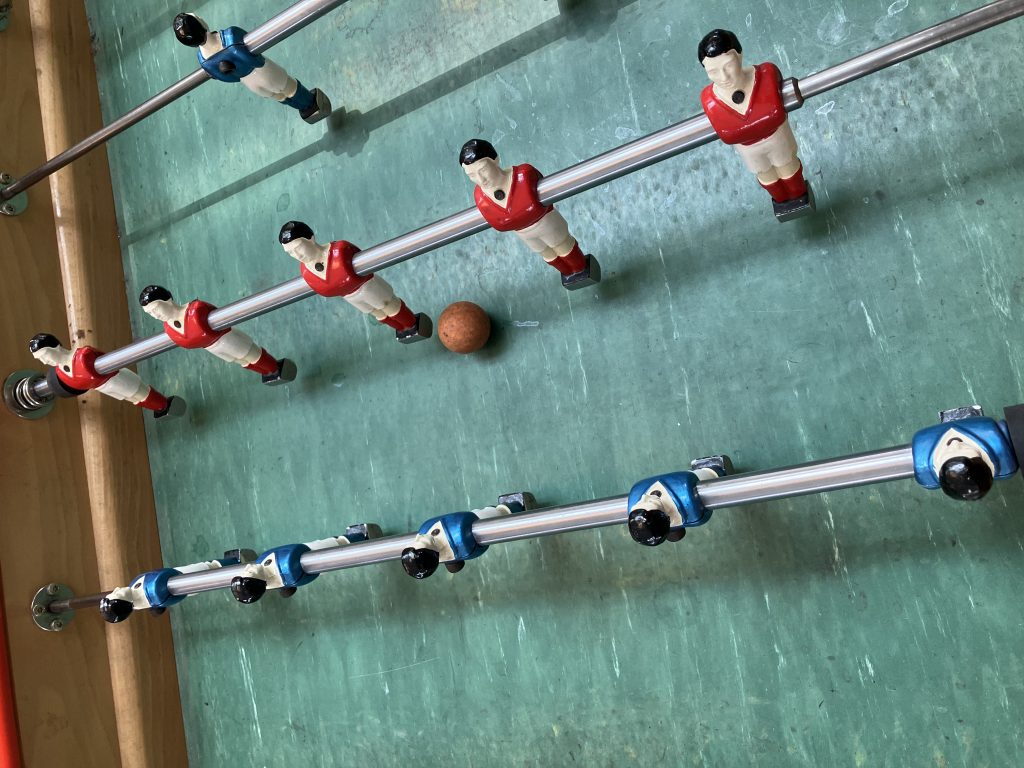Coding For Self-Expression
Andreas Refsgaard is an artist and a creative coder based in Copenhagen, who is a master at weaving together the tangible and the intangible, the physical and the digital, to create truly immersive experiences. Previously we were with him in Istanbul for our curation of the Digilogue Summit. And now, we have the pleasure of crossing paths with him once again, at Sonar İstanbul. So get ready to explore the intersection where imagination meets innovation as we dive into the world of Andreas Refsgaard, where he blurs the lines between reality and the surreal.
Let’s begin from the very first. What was your starting point and now how do you feel about it? Tell us about your journey with coding, art, and technology.
Andreas Refsgaard: I studied interaction design in Copenhagen. Rather than using technology to solve problems, making wireframes, and designing user diagrams, I was more interested in using technology to ask questions and make people laugh. So, I gradually shifted towards art while still maintaining my roots in designing interactive experiences.
Although I began writing code in my late twenties, and to this day, I am still a very sloppy coder, I find code to be a powerful tool that enables me to use a variety of mediums such as visuals, sound, text, poetry, motors, internet data, etc. For me it is the ultimate creative tool.
In a few words, how would you describe what Playful Machine Learning is, for those who are unfamiliar with the concept?
Andreas Refsgaard: Playful Machine Learning is an approach to machine learning that emphasizes engagement, creativity, and exploration through interactive and entertaining experiences. It aims to make the process of learning and understanding machine learning concepts more accessible and enjoyable for a wider audience. This approach often involves the use of games, interactive tools, or artistic applications and as examples I enjoy tinkering with unique input-output combinations, such as playing music with eye movements, controlling games through unexpected sounds, or creating poems or memes from images.
By making machine learning more playful, I hope it can help demystify complex concepts, foster curiosity, and inspire a broader range of people to participate in the field.
Just a few decades ago, people feared AI and its potential. But today, our society utilizes algorithms and AI in various areas like social media, agriculture, digital arts, aviation and many more. How would you reason with someone who is still skeptic of AI and its potential?
Andreas Refsgaard: I think it is perfectly fine to be skeptical or scared about AI. I am personally both very fascinated by the possibilities and pretty frightened by negative consequences and effects. But it is hard to argue with its potential. Generative AI has gone mainstream in the last six months, and people are already using tools to generate texts and images at a scale that was hard to imagine just a few years ago. I think that shows not only its future potential but also its current capabilities.
You call yourself a ‘creative coder’. Where does creativity fit in your process of coding and making?
Andreas Refsgaard: I don’t use code to solve anything, sell anything or make anything more effective. Instead, I use code as a creative tool, just like other artists use other tools.
In my artistic practice, I apply a humorous and cheerful approach to the digital tools and their potential applications, purposes, and values. My works often consist of imaginative and unconventional combinations of inputs and outputs that allow people to, for example, play music using eye movement, control games by making silly sounds, or transform drawings of musical instruments into real compositions.
My idea of creativity is pretty combinatorial. I don’t believe anything is truly original, and I see creativity as the process of combining existing things in new ways. The majority of my works are simply existing models, techniques, inputs or outputs glued together with a bit of code.
What is the greatest technological invention for you?
Andreas Refsgaard: Good question. The computer perhaps?
You have various AI software’s from your ‘Teachable Machine’ to ‘Poems About Things’ to ‘Doodle Tunes’. Which one would you say was the most challenging for you to conceptualize and code?
Andreas Refsgaard: Both Teachable Machine and Doodle Tunes are projects that are done in collaboration with others. Doodle Tunes was originally made at a hackathon in Seoul in collaboration with artist Gene Kogan and Teachable Machine was made with the Danish creative developer Lasse Korsgaard, teams from Google Creative Lab and PAIR as well as US studio Use All Five. I think Teachable Machine was the most complex project, and thankfully I was mainly building prototypes and conceptualizing the project, not doing the production code.
“Generative AI has gone mainstream in the last six months, and people are already using tools to generate texts and images at a scale that was hard to imagine just a few years ago. I think that shows not only its future potential but also its current capabilities.”
-Andreas Refsgaard
What is a big NO for you – among the current tech trends?
Andreas Refsgaard: I don’t have any big NO’s, and I am really curious about most techniques. But I am often a bit skeptical when it comes to trends that focus more on sale and exclusivity and then art and sharing.
What was your most iconic work?
Andreas Refsgaard: I made an extremely silly piece some years ago with my friend Lasse Korsgaard, where we trained a system to recognise silly sounds and controlled the classic first-person shooting game “Wolfenstein” by grunting and saying “Pew pew”. As silly and stupid as it was, I think it was the most iconic thing I have done.
How would you describe todays art scene through the technology perspective?
Andreas Refsgaard: That is a hard question to answer. I think my work exists somewhere between art, tech, design and education and I think I have more interactions with people from other backgrounds than art. I do not have a classic art background, nor do I have a big network of people who are full time artists. But at least in Denmark, I see a rising interest in technology from the art scene compared to a few years ago. We just had a big exhibition with Refik Anadol at one of the biggest art museums in Copenhagen, and that openness to digital art is new.
Where do you see yourself in a decade? What’s the fantasy?
Andreas Refsgaard: This might be boring, but I don’t have any wild fantasies or huge ambitions. I hope to be able to continue doing what I do now.
Who is your muse?

Andreas Refsgaard: My baby daughter.
Define happiness.
Andreas Refsgaard: Laughing, freedom from worries, being close to people I care about.
Which words or phrases do you most overuse?
Which talent would you most like to have?
Andreas Refsgaard: I am not very handy or good at building physical stuff, so I would love to be better at woodwork, fixing things around my apartment or building artworks with more physical aspects.
An essential piece at your studio?

What is the lock screen on your phone?
Can you share your favorite photo you took in İstanbul?

Your last discovery on Instagram?
What is your favorite Turkish food?
Andreas Refsgaard: I have been to Çiya Sofrası in Kadıköy where I got amazing İçli köfte (I think was the name?).
Note to self!

A fun story?

Andreas Refsgaard: The t-shirt I am wearing used to belong to my father, and is from from a vacation my parents had to Kuşadası in Turkey in 1992. I was back home in Denmark, where my grandmother was taking care of me. It is one of my favorite shirts.

FROM BASED ISTANBUL NO41: HOPE ISSUE